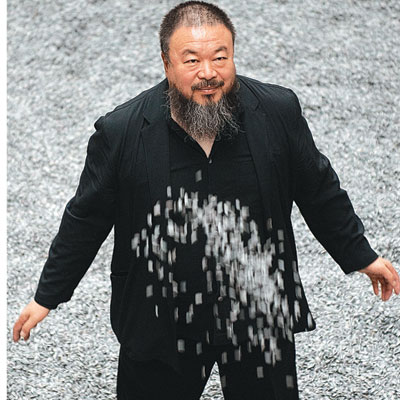|

Ai Weiwei
fills London gallery with 100m sunflower seeds
MAVERICK Chinese artist Ai Weiwei has filled the main hall in London’s Tate Modern art gallery with 100 million sunflower seeds.
Around 150 tons of seeds have been used to make an inches-thick carpet that visitors to the gallery will be encouraged to play in and crunch under foot.
The enormous installation, which opened last week, is the work of Ai, known as China’s “Andy Warhol.” The work is the 11th commissioned in the internationally acclaimed Unilever Series at the gallery, an annual series that was initiated in 2000 by Louise Bourgeois’s spiders and mirrors.
Ai’s seeds are porcelain, each one individually handcrafted by laborers in the Chinese city of Jingdezhen. Each tiny piece had been individually molded and hand-painted, the gallery said.
Sunflower seeds are a popular Chinese street snack and one of the country’s most popular exports. But they hold greater significance for Ai, who spent his childhood in Xinjiang as the son of an exiled celebrated poet during the Cultural Revolution.
“It was very poor and rural there, we had nothing else to enjoy. Sunflower seeds were something basic that everyone could have. Every holiday, wedding or even just going to the movies, we would all share sunflower seeds with one another,” he said. “I think it’s a very common, inconspicuous object, but it also has a special relationship to our daily lives. Of course, during the Cultural Revolution we all knew that Sun symbolized the leader, and sunflowers represented the people. So I think these seeds have multiple meanings.”
Ai is a well-known and controversial figure in China, probably best-known today for the design — in collaboration with Herzog & de Meuron — of Beijing’s “Bird’s Nest” stadium, built for the 2008 Olympics.
One of China’s leading social activists and bloggers, Ai later distanced himself from the Olympics as a protest for being used as propaganda.
In the 1990s, he came to international attention when he helped establish the avant-garde East Village in Beijing where a group of artists took up residence in impoverished migrant workers housing on the city’s outskirts. It became a mecca for radical Chinese contemporary artists like Ma Liuming.
Other notable large-scale artworks that have filled the Tate Modern’s Turbine Hall include Carsten Hollers’ slides which had visitors shouting with excitement as they slid down; Olafur Eliasson’s giant projection of Sun in “The Weather Project” and a huge crack in the floor courtesy of Doris Salcedo’s “Shibboleth.” (SD-Agencies)
|

